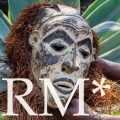In 1920, it was handed over to the Museum by Edgar Dewdney, a Lieutenant Governor of the Northwest Territories.
Although the exact means of acquisition is undocumented, the museum believes it was likely acquired through the enforcement of colonial assimilation policy.
Crafted with buffalo horns, sacred bird feathers, porcupine quills, and adorned with red cloth and brass bells, the headdress was identified after research by Siksika Nation delegates, in collaboration with Kainai and Blackfeet Nations.
It was once traditionally worn by a holy woman of the Blackfoot Holy Buffalo Woman Society known as the Motokiks. The museum said it is being returned so that it can be used by the holy women who fought to protect the continuity of their culture.
Earlier,in 2022, RAMM returned some objects to Canada, held since 1878, following a blessing at the museum.


